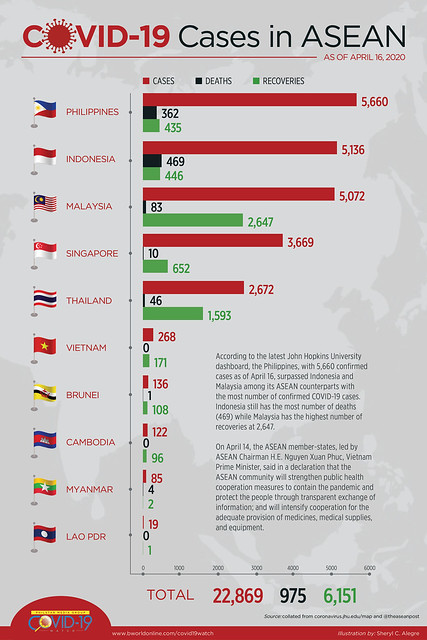Contents:


Book/shares will decrease if more is paid for them than was received when originally issued (pre-existing book/sh). Hidden values undervalued assets not accurately reflected in a company’s share price. In theory, a low price-to-book-value ratio means you have a cushion against poor performance. Outdated equipment may still add to book value, whereas appreciation in property may not be included.
Book value is calculated by taking the aggregate value of all its assets and deducting all the liabilities from it. Assets include both current and fixed assets, and liabilities include both current liabilities and non-current liabilities. The book value of an organisation is computed after netting the aggregate book value of all the assets against its intangible counterparts and liabilities. In a roundabout way, it is the book value of shareholder’s equity. If the book value per share is higher than its market value per share — the stock’s current trading price — then it can indicate an undervalued stock. If the book value per share is lower than its market value per share, it can indicate an overpriced, or overvalued stock.
You are unable to access investinganswers.com
The book value of the asset is its original cost, minus depreciation . On the other hand, book value per share is an accounting-based tool that is calculated using historical costs. Unlike the market value per share, the metric is not forward-looking, and it does not reflect the actual market value of a company’s shares. The book value per share and the market value per share are some of the tools used to evaluate the value of a company’s stocks. The market value per share represents the current price of a company’s shares, and it is the price that investors are willing to pay for common stocks. The market value is forward-looking and considers a company’s earning ability in future periods.

There is another method by which accumulated depreciation could be ascertained and it’s called Declining method or Written down value method of depreciation. This method is used to recognize the majority of an asset’s depreciation early in its lifespan. Intangible assets explain the difference between the book value of an organization and the market value of an organization.
How to Calculate Book Value (the book value formula)
These can be included as a part of your https://1investing.in/ assets if they appear on your financial statements. When calculating the book value per share of a company, we base the calculation on the common stockholders’ equity, and the preferred stock should be excluded from the value of equity. It is because preferred stockholders are ranked higher than common stockholders during liquidation. The BVPS represents the value of equity that remains after paying up all debts and the company’s assets liquidated. Other limits of what book value shows are that it uses historical cost for pricing certain assets that may have gone up quite a bit over a long period of time.

You are responsible for ensuring the accuracy of the book value for tax purposes. Once the security is in your account, we will update the book value for you if more shares or units of the same security are purchased. The market value of a security is based on its market price at a specific point in time, and is affected by fluctuations in the market. The book value of a security is not affected by the rise and fall of prices in the market. Themarket valueof your security, XY, is now $2,500 (100 x $25), but thebook valueis still $2,000. This can happen when a company decides to retire or sell an asset.
What Book Value Means to Investors
A P/B ratio of 1.0 indicates that the market price of a company’s shares is exactly equal to its book value. For value investors, this may signal a good buy, since the market price of a company generally carries some premium over book value. In personal finance, the book value of an investment is the price paid for a security or debt investment.
UBS Got Credit Suisse for Almost Nothing – Bloomberg
UBS Got Credit Suisse for Almost Nothing.
Posted: Mon, 20 Mar 2023 07:00:00 GMT [source]
The first company has a book value per share of $10 and a market price of $50 per share. Investors are likely to see this as a stock that has been overvalued. We will use the market price of the security when it is transferred in to your account as the book value. Another way of comparing companies involves using the price-to-book (P/B) ratio.
Importantly, this thought process for determining carrying value versus fair value prediction paves the way for the concept of entity value , which is a holistic measure of organizational value. Plant and equipment items are equal to around 25% of the carrying value. Accounts receivable (Debtors + B/R) and inventory items are equal to 50% of the carrying value. Gain in-demand industry knowledge and hands-on practice that will help you stand out from the competition and become a world-class financial analyst. The Balance uses only high-quality sources, including peer-reviewed studies, to support the facts within our articles. Read our editorial process to learn more about how we fact-check and keep our content accurate, reliable, and trustworthy.
The answer could be that the market is unfairly battering the company, but it’s equally probable that the stated book value does not represent the real value of the assets. Companies account for their assets in different ways in different industries, and sometimes even within the same industry. This muddles book value, creating as many value traps as value opportunities.
Investors generally take an objective route of where a company stands in comparison to the market. ABC and Bros purchased a Machinery for Rs. 1,00,000 and recorded its value in the balance sheet at the end of the third year to be Rs. 72,900. The first company has a book value of $1 million and has 100,000 shares outstanding. For instance, suppose a firm has a total of $2 million in assets and $1 million in outstanding liabilities.
The power of authentic storytelling for founders – CTech
The power of authentic storytelling for founders.
Posted: Sun, 26 Mar 2023 10:50:00 GMT [source]
You can compare the meaning of book value value of the total number of an entity’s outstanding shares to its book value to see if the shares are theoretically undervalued or overvalued . Hence, its market capitalisation is Rs.6.2 lakh and its shareholder’s equity or net value of assets is Rs.6 lakh (1500,000 – 900,000). Book value is a calculation that aims to determine the actual, complete worth of a company, based on its assets. It’s basically the break-up value — the amount that the company would be worth if it were liquidated. Investors looking for low-priced but fundamentally sound stocks use a company’s book value to see if its shares are fairly priced. Book value is an important measure for investors because it can help them to find bargain deals on various stocks.
That way, they determine whether its shares are overpriced or underpriced. Expressed as a dollar amount, BVPS breaks the company’s overall book value down by dividing it by all the company’s outstanding shares, to come up with a per-share amount. Book value works best on hard-goods companies, vs service providers or firms with intangible assets.
Even when the assets are financial in nature, and not prone to depreciation manipulation, the mark-to-market rules can lead to overstated book values in bull markets and understated values in bear markets. You need to know how aggressively a company has been depreciating its assets. This involves going back through several years of financial statements. If quality assets have been depreciated faster than the drop in their true market value, you’ve found a hidden value that may help hold up the stock price in the future. If assets are being depreciated slower than the drop in market value, then the book value will be above the true value, creating a value trap for investors who only glance at the P/B ratio. The book value of a company is the difference in value between that company’s total assets and total liabilities on its balance sheet.
In this method depreciation is charged on the book value of asset. Savvy investors will always be careful to assess a stock from a few angles instead of buying based on only one value indicator. The information provided in this article is for general purposes only and does not constitute personal financial advice. Please consult with your own professional advisor to discuss your specific financial and tax needs.
In other words, one can use this metric to determine if a company’s shares are overvalued or undervalued. Hence, this metric is useful for value investors seeking stocks trading at a price less than their intrinsic value. The book value per share is calculated by taking the ratio of equity available to common stockholders against the number of shares outstanding. When compared to the current market value per share, the book value per share can provide information on how a company’s stock is valued.
There are several actions that could trigger this block including submitting a certain word or phrase, a SQL command or malformed data. Book value shopping is no easier than other types of investing; it just involves a different type of research. The best strategy is to make book value one part of what you look for. You shouldn’t judge a book by its cover, and you shouldn’t judge a company by the cover it puts on its book value. Skylar Clarine is a fact-checker and expert in personal finance with a range of experience including veterinary technology and film studies.
- In other words, the book value adjusts the historical cost of an asset by the accumulated depreciation.
- It is because preferred stockholders are ranked higher than common stockholders during liquidation.
- Evidently, the book value of any organisation plays a vital role in the determination of its worth.
- While it is correct that when the number of shares is doubled the EPS will be cut in half, it is too simple to be the full story.
- Financial assets include stock shares and bonds owned by an individual or company.
Repurchasing 500,000 common stocks from the company’s shareholders increases the BVPS from $5 to $6. As the accumulated depreciation account increases, the book value of the asset decreases because part of the asset’s useful life is used up and gone. At the end of year one, the asset’s book value would be $4,000 calculated like this. Book value on its own doesn’t give you a lot of data about the real value and potential return of a company. For instance, just because one company has a net worth of $1 million and a second has a net worth of $2 million, that doesn’t mean the second is always the better place to put your investment dollars. That’s why people who use it often look at book value and how it relates to other metrics to compare different stocks.
This financial ratio compares a company’s market price to its book value. On the other hand, if it is below 1 indicates an undervalued company. Financial assets include stock shares and bonds owned by an individual or company. These may be reported on the individual or company balance sheet at cost or at market value. An asset’s initial book value is its actual cash value or its acquisition cost. Not all purchased items are recorded as assets; incidental supplies are recorded as expenses.